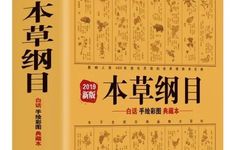

Ben
Cao
Gang
Mu
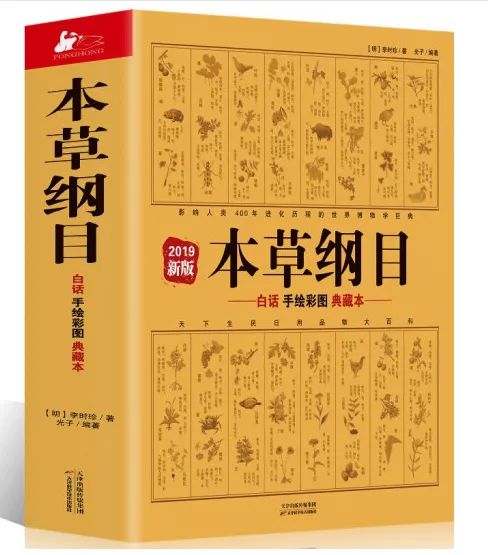
The Compendium of Materia Medica (Bencao Gangmu) was written by the Ming Dynasty physician Li Shizhen. It is a monumental work that synthesizes and summarizes previous achievements in materia medica, compiled over decades of practice and research. The book contains over 1.9 million words, divided into 16 sections and 60 categories, documenting 1,892 medicinal substances and collecting 11,096 medical prescriptions.
Many plants in the herb section of the Compendium of Materia Medica grow around us, scattered in the corners of our lives. They can be found in the mountains, parks, along roadsides, and even in the cracks of walls. So, do you recognize them? Do you understand them? Let us open the Compendium of Materia Medica together and participate in the “Herb Identification Challenge” to appreciate the profound depth of Traditional Chinese Medicine!
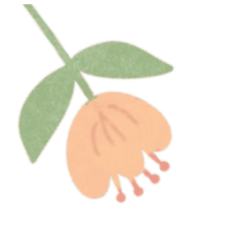
Guess the flowers and herbs from the pictures! The challenge begins!
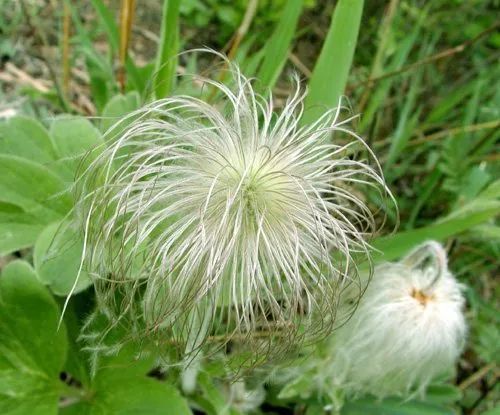
Bai Tou Weng (White-Headed Elder)
Lower Grade in Shennong’s Classic of Materia Medica
【Name Explanation】 Wild Elder, Hu Wang’s Messenger, Naihua Grass.
【Summary】[According to the Supplementary Record] Bai Tou Weng grows in high mountain valleys and fields, harvested in April. [Gong says] Its leaves resemble large peonies, with a single stem. The flower at the top is purple, resembling a hibiscus flower. The fruit is large, like a chicken egg, with white hairs over an inch long, resembling the head of an old man, hence the name. Tao mentions that near the root there is white fluff, which is not recognized. The ones stored in the Taichang are actually female water chestnuts. The root of Bai Tou Weng resembles Xu Duan but is flat. [Song says] It is found everywhere. The seedlings emerge in January, growing in clusters, resembling white and soft, slightly elongated. The leaves grow at the top of the stem, like apricot leaves, with fine white hairs and not smooth. Near the root, there is white fluff. The root is purple, deep like a turnip. The seedlings are still in the wind, still, and sway without wind, similar to Chuan Jiao and Du Huo. Tao’s notes do not mention the stem and leaves, while Su’s notes say the leaves resemble peonies, and the fruit like a chicken egg, with white hairs over an inch long, are all errors. [Zong Shi says] Bai Tou Weng grows in the boundary of Luoyang, Henan, often seen in the mountains and fields of Xin’an, just as Su Gong said. To this day, Bai Tou Weng pills are sold in the mountains, claiming that taking them leads to longevity, which loses the original meaning of the ancient name. Tao’s statement is inaccurate, hence the criticism.
Swipe left
Check
View
Answer
Image

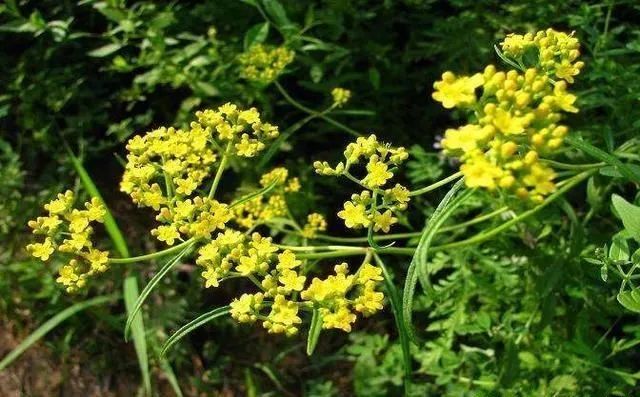
Ci Hu (Chai Hu) (Bupleurum)
Upper Grade in Shennong’s Classic of Materia Medica
【Name Explanation】Earth Smoke, Artemisia, Mountain Vegetable, Rhu Grass.
【Summary】[According to the Supplementary Record] The leaves of Ci Hu are called Artemisia, spicy and edible, growing in Hongnong Valley and Yuanju. The roots are harvested in February and August and dried in the sun. [Hongjing says] It is now found near the path, resembling the previous Hu but stronger. [Gong says] The Xiao Chai Hu Decoction for cold damage is essential for phlegm and qi. If made with Artemisia root, it is a great mistake. [Song says] It is now found in the Guanshan, Jianghu areas, with the best being from Yinzhou. The seedlings in February are very fragrant. The stem is blue-purple and hard, with fine lines. The leaves resemble bamboo leaves but are slightly tighter and smaller, and some resemble slanted Artemisia, while others are shorter like Ophiopogon leaves.
In July, it blooms yellow flowers. The root is light red, stronger than the previous Hu. The ones from Danzhou produce blue seeds, which differ from those in other places. Its root resembles a reed head, with red hairs like a mouse tail, and the long ones are preferred.
Swipe left
Check
View
Answer
Image

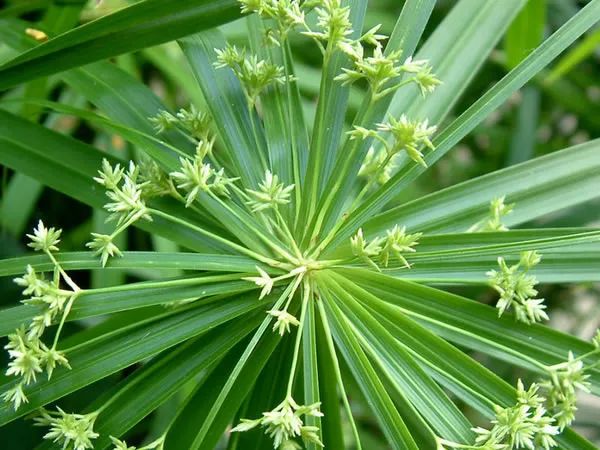
Deng Xin Cao (Deng Xin Grass)
From the Song Dynasty Kaibao
【Name Explanation】Tiger Whiskers Grass, Jade Grass.
【Summary】[Zong Shi says] It is also found in Shaanxi. Steamed and dried, the center is taken to burn lamps, which is called cooked grass. There is also a raw version, which is simply dried and peeled for use as raw grass. For medicinal use, raw grass is preferred. [Shizhen says] This is similar to Longxu, but Longxu is tighter and solid, while this grass is slightly coarser and hollow white. The people of Wu cultivate it, using the pulp for lamp wicks, and weaving mats and raincoats.
Swipe left
Check
View
Answer
Image

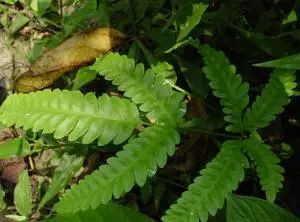
Gao Ben (Gao Root)
Middle Grade in Shennong’s Classic of Materia Medica
【Name Explanation】Gao Pi, Ghost Qing.
【Summary】[According to the Supplementary Record] Gao Ben grows in high mountains and valleys. The roots are harvested in January and February and dried in the sun, taking thirty days to complete. [Song says] It is now found in the western, eastern, and Yanzhou, Hangzhou areas. The leaves resemble the fragrant Bai Zhi, but are thinner than the Qiong Lao. In May, it has white flowers, and in July and August, it produces seeds. The root is purple. [Shizhen says] It is found in the deep mountains of Jiangnan. The root resembles Qiong Lao but is light and thin, with a numbing taste, not suitable for drinking.
Swipe left
Check
View
Answer
Image

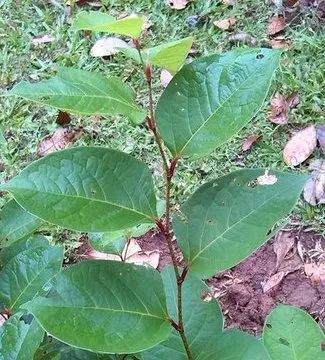
Gou Ji (Dog Spine)
Middle Grade in Shennong’s Classic of Materia Medica
【Name Explanation】Strong Muscle, Support Tendons, Hundred Branches, Dog Green.
【Summary】[According to the Supplementary Record] Gou Ji grows in Changshan valleys. The roots are harvested in February and August and dried in the sun. [Pu says] Gou Ji resembles grass, with nodes like bamboo that have thorns, round red leaves, and yellow-white roots, resembling bamboo roots, with hairy thorns. The Qibo Classic states: The stem has no nodes, the leaf tips are round and green-red, with white skin and red veins. [Song says] It is now found in the Taihang Mountains, Zibo, Wen, and Meizhou. The seedlings are fine and green, growing over a foot tall, with no flowers. Its stem and leaves resemble Guan Zhong but are thinner. The root is black, three to four inches long, with many branches, resembling a dog’s spine, with a large greenish flesh. The roots are harvested in spring and autumn and dried in the sun. There are also varieties with golden hair. Tao’s statement refers to a thorny grass, not Gou Ji, which is still used in Jiangnan.
Swipe left
Check
View
Answer
Image

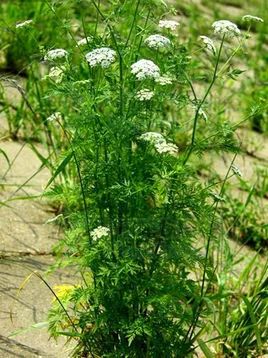
Hu Zhang (Japanese Knotweed)
Middle Grade in Supplementary Record
【Name Explanation】Bitter Stick, Big Insect Stick, Spotted Stick, Sour Stick.
【Summary】[Hongjing says] It is very common in fields, resembling large Polygonum, with spotted stems and round leaves. [Baosheng says] It is found everywhere. It grows in wet places, reaching over a meter tall, with red stems and yellow roots. The roots are harvested in February and March and dried in the sun. [Zong Shi says] This herb is medicinal. The Shu Ben states that it grows over a meter tall, which is incorrect. Generally, it resembles cold chrysanthemums, but the flowers, leaves, stems, and pistils differ significantly. The stems and leaves have black spots. It blooms in June and July, with flowers that are larger and slightly deeper in color. It is abundant in the foothills of Shaanxi.
Swipe left
Check
View
Answer
Image

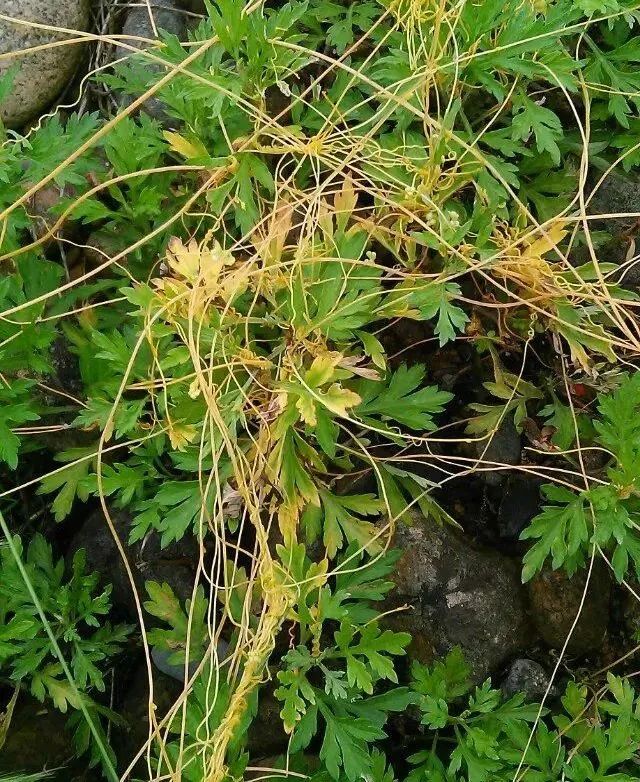
She Chuang (She Chuang Grass)
Upper Grade in Shennong’s Classic of Materia Medica
【Name Explanation】Snake Grain, Snake Rice.
【Summary】[According to the Supplementary Record] She Chuang grows in Linzi valleys and fields. The seeds are harvested in May and dried in the shade. [Hongjing says] It is very common in fields and villages, with flowers and leaves resembling those of the Mihu. [Baosheng says] The leaves resemble small Ophiopogon leaves, with white flowers and seeds like millet, yellow and white. It grows in wet places, found everywhere, with the best being from Yangzhou and Xiangzhou. [Song says] The seedlings emerge in March, growing to three to two feet tall, with finely divided green leaves, forming clusters like Artemisia branches. Each branch has over a hundred flower heads, clustered together, resembling horse celery. It blooms in April and May, with white flowers that are umbrella-shaped. The seeds are yellow-brown, light and thin. [Shizhen says] The flowers resemble crushed rice clustered together. The seeds are two pieces combined, resembling dill seeds but thin, with fine ridges. Any flower or seed resembling She Chuang should include Angelica, Ophiopogon, Water Celery, Gao Ben, and Carrot.
Swipe left
Check
View
Answer
Image

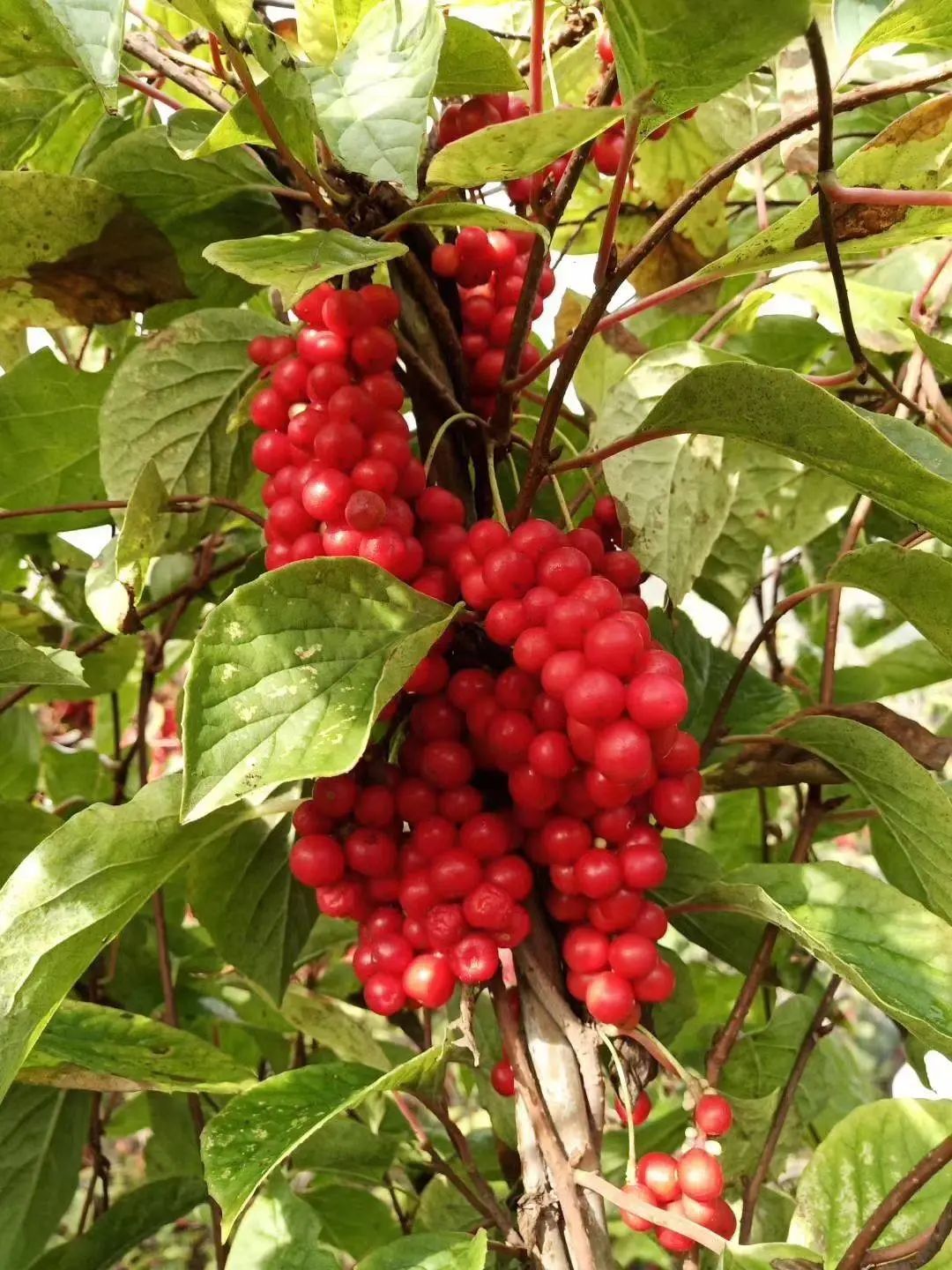
Tu Si Zi (Cuscuta Seed)
Upper Grade in Shennong’s Classic of Materia Medica
【Name Explanation】Cuscuta, Cuscuta, Cuscuta, Cuscuta, Red Net, Jade Girl, Tang Meng, Fire Grass.
【Summary】[According to the Supplementary Record] Tu Si Zi grows in the marshes of Korea, climbing over grasses and trees. The seeds are harvested in September and dried in the sun. The yellow and thin ones are called Red Net, while the lighter and larger ones are called Cuscuta. Their functions are the same. [Hongjing says] It is very common in fields and villages, climbing over blue, hemp, and Artemisia. Its medicinal use is considered a tonic, requiring soaking in wine overnight, suitable for pills but not for boiling. [Song says] It is now found near the path, with the best being from Yuanju. The seedlings emerge in summer, initially resembling fine threads, unable to rise on their own. They wrap around other grass stems as they grow, with roots gradually detaching from the ground and relying on the air. Some say it has no roots, growing by air, which is true. [Shizhen says] According to Ning Xian Wang’s Gengxin Yuce, Fire Grass is Tu Si Zi, a Yang herb. It often grows in abandoned gardens and ancient paths. Its seeds enter the ground, initially having roots, but as they grow, they wrap around other plants, and their roots eventually break off. It has no leaves and white flowers, slightly red, with a fragrant aroma. The seeds are like small beans, yellow in color, growing on the stems is best, especially abundant in the Huai Meng forest, and are better for medicinal use.
Swipe left
Check
View
Answer
Image


Wu Wei Zi (Schisandra Berry)
Upper Grade in Shennong’s Classic of Materia Medica
【Name Explanation】Xing Ren.
【Summary】[According to the Supplementary Record] Wu Wei Zi grows in the valleys of Qishan and Daitu. The seeds are harvested in August and dried in the shade. [Hongjing says] The best comes from Korea, being fleshy and sweet-sour; the next best comes from Qingzhou and Jizhou, which is overly sour, with seeds resembling pig kidneys. There are also varieties from Jianping, which have less flesh, with seeds that do not resemble each other, and are bitter, but still good. This herb is very oily, and when exposed to the sun, it can be crushed and sifted. [Gong says] It grows on climbing trees. Its leaves resemble large apricot leaves. The fruit forms clusters like those of the Malabar nightshade, about the size of a pea. It is found in Puzhou and the mountains of Lantian, and is now tributed from Hezhong Prefecture. [Song says] It is especially abundant in the eastern and western provinces, and also found in Hangzhou and Yue. The seedlings emerge in early spring, climbing red vines on tall trees, growing six to seven feet long. The leaves are rounded like apricot leaves. In March and April, it blooms yellow-white flowers, resembling lotus flowers. In July, the fruit matures, growing in clusters at the tips of the stems, about the size of peas, turning from green to red and purple, and should be used fresh without removing the seeds. There are several varieties, generally similar.
Swipe left
Check
View
Answer
Image
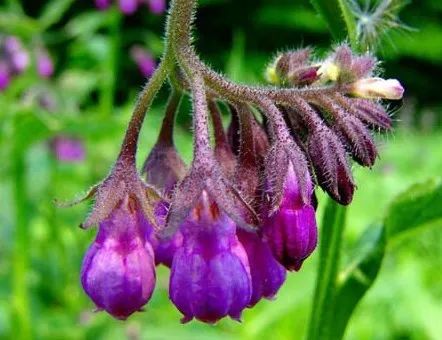
Zicao (Lithospermum)
Middle Grade in Shennong’s Classic of Materia Medica
【Name Explanation】Purple Dan, Purple Fu (ǎo), Zimo, Di Xue, Crow’s Beak Grass.
【Summary】[According to the Supplementary Record] Zicao grows in the valleys of Dazhang and Chu. The roots are harvested in March and dried in the shade. [Hongjing says] It is now found in Xiangyang, mostly coming from Nanyang and Xinye, where people cultivate it, which is now used for dyeing purple, and no longer for medicinal purposes. The Book of Natural History states that the purple grass from Ping’s Yang Mountain is particularly good. The Wei state produces a particularly dark dye. In recent years, Dongshan has also cultivated it, with a lighter color than those from the north. [Gong says] It is found everywhere, and some families cultivate it. The seedlings resemble fragrant orchids, with red stems and green leaves. In February, it blooms purple-white flowers, producing white seeds in autumn. [Shizhen says] When planting purple grass, the seeds are sown in the furrows in March, and the roots are harvested in September when the seeds are ripe. The roots should be dried in the shade, and the roots have white hairs like fluff. If harvested before flowering, the roots are bright in color; if harvested after flowering, the roots are dark and unattractive. When harvesting, they should be pressed flat with stones and dried; during collection, avoid human urine, donkey and horse dung, and smoke, as they all turn the grass yellow.
Swipe left
Check
View
Answer
Image

Contributed by | Zhongshan Branch
Image and text editing | Chen Li

